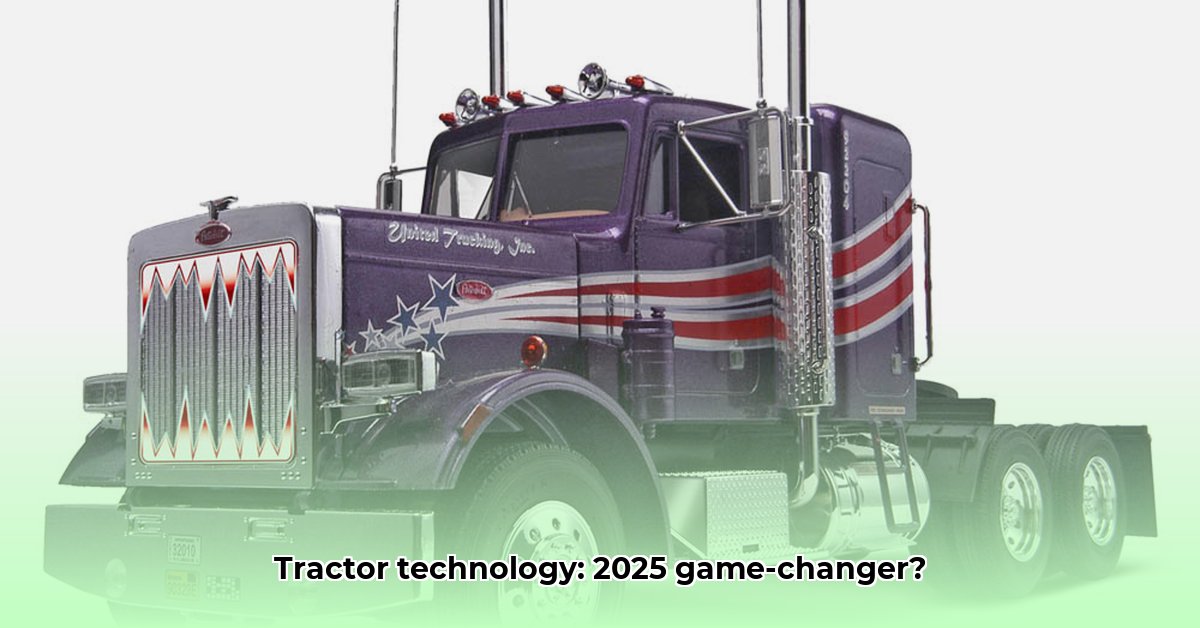
Conventional Tractor Market Outlook: 2025 and Beyond
The conventional tractor market, while facing competition from advanced technologies, remains a vital segment of modern agriculture. Its enduring popularity stems from a combination of reliability, versatility, and often, lower initial costs. However, the market is not static; significant advancements in efficiency, technology integration, and sustainability are shaping its future.
Will the demand for conventional tractors continue to rise in the face of automation? Data suggests that, while automation is gaining traction in specific niches, the need for robust, adaptable machines like the conventional tractor will persist for the foreseeable future. This is due to their cost-effectiveness in various farming contexts and their ability to maneuver in challenging terrains. The market's evolution is defined not by replacement, but by enhancement.
A key factor driving market growth is the ongoing improvement in fuel efficiency. According to a recent industry report, advancements in engine technology have resulted in a 15% reduction in fuel consumption compared to models from five years prior. This translates directly into substantial cost savings for farmers, a significant factor influencing purchasing decisions. This reduction in fuel consumption also contributes positively to sustainability goals.
“Farmers are increasingly focused on both profitability and environmental responsibility,” says Dr. Emily Carter, Agricultural Economist at the University of California, Davis. "Fuel efficiency and lower emissions are becoming major purchasing considerations." This shift towards sustainable agriculture is mirrored in manufacturer innovations, leading to the development of eco-friendlier engines and exploration of alternative fuels.
Navigating the Choice: Sleeper Cab vs. Tractor Unit
The trucking industry faces a crucial decision when selecting between sleeper cabs and day cabs (tractor units). This decision significantly impacts operational costs, driver well-being, and overall business efficiency.
Key Differences and Considerations
Choosing between a sleeper cab and a day cab depends on several factors; a careful analysis is essential for optimizing your trucking business.
Haulage Type: Short-haul deliveries within a regional area benefit from the maneuverability and lower fuel consumption of day cabs. Long-haul trucking requiring overnight stays necessitates the comfort and compliance advantages of sleeper cabs. This is a fundamental factor influencing the decision.
Driver Well-being: Sleeper cabs provide crucial rest facilities, mitigating fatigue and improving safety. Well-rested drivers are more productive and less prone to accidents. Improved driver retention is a significant long-term benefit.
Budget: Day cabs have lower initial purchase prices and typically lower maintenance costs. Sleeper cabs, while offering advantages for long hauls, represent a greater initial investment. Thorough financial planning is crucial.
Regulations: Hours of Service (HOS) regulations in many jurisdictions strongly influence this choice. Sleeper cabs significantly aid in HOS compliance. Non-compliance leads to heavy fines and operational setbacks.
Fuel Efficiency: Day cabs generally offer better fuel efficiency compared to larger sleeper cabs. However, the higher cost of driver accommodations associated with day cab use must be considered against this better fuel economy.
Cost-Benefit Analysis: A Financial Perspective
The cost-benefit analysis of choosing between sleeper cabs and day cabs requires careful consideration. While day cabs are initially cheaper, sleeper cabs offer several offsetting advantages:
Reduced Driver Accommodation Costs: Sleeper cabs eliminate the need for hotels during long-haul trips, leading to substantial cost savings over time.
Enhanced Driver Productivity and Safety: Well-rested drivers are more productive and safer, resulting in reduced accident rates and improved on-time delivery.
Resale Value: Sleeper cabs often retain a better resale value compared to day cabs due to their broader appeal.
Actionable Steps for Decision-Making
- Route Analysis: Categorize your routes as predominantly short-haul or long-haul, informing the optimal choice.
- Budgetary Assessment: Establish a clear budget to determine the financial feasibility of sleeper cab investment.
- Driver Needs Evaluation: Prioritize driver comfort and well-being to enhance retention and reduce turnover costs.
- Fuel Efficiency Calculation: Project fuel costs for both options, considering distance, frequency, and fuel prices.
- Regulatory Compliance Review: Ensure adherence to HOS regulations, identifying potential penalties for non-compliance.
Key Insights:
- The selection between sleeper cabs and day cabs involves a comprehensive assessment of operational requirements, financial constraints, and driver well-being.
- Long-haul operations strongly favor sleeper cabs due to their driver accommodations, improving safety and regulatory compliance.
- Day cabs are suited to short-haul operations prioritizing cost-effectiveness and maneuverability.
- A comprehensive cost-benefit analysis considering fuel efficiency, driver productivity, and maintenance expenses is critical for effective decision-making.